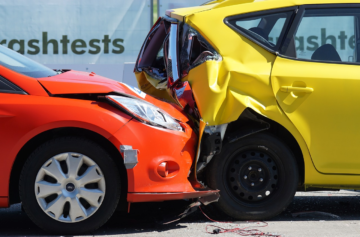Airbags and seatbelts are synonymous with safety and deterrence, preventing serious injuries and saving thousands of lives annually. Their ubiquity has led to a decrease in road fatalities, but these devices aren’t infallible. Under certain conditions, airbags and seatbelts may fail to function as intended. In some cases, they can contribute to injuries. In this post, we will explore how these safety devices work, how they can fail, and what passengers and drivers can do to stay safe.
How Seat Belts and Airbags Work
To appreciate the rarity of failure, it’s crucial to understand how airbags and seat belts function. Seat belts are the primary restraint system in a Mercedes san antonio, keeping occupants in place during a collision and preventing ejection. They’ve been fixtures on cars for several decades and for very good reasons.
When accidents happen, cars may stop—but the crash’s momentum propels passengers and drivers forward. Without the restraint of a seat belt, an occupant may hit the inside of the car, the windshield, or another passenger. These unfortunate scenarios may prove fatal or lead to life-altering, permanent injuries.
Standard three-point seat belts, which consist of shoulder and lap restraints, distribute crash forces across the ribcage, pelvis, and other strong body parts. With features like load limiters and pre-tensioners, modern seat belts reduce the risk of crash-related internal injuries.
On the other hand, airbags serve as supplementary restraints. They’re designed to work alongside seat belts, deploying instantly during collisions and keeping occupants from striking the steering wheel, side windows, and dashboard. Different kinds of airbags—including curtain, knee, and front airbags—are placed to protect various body parts depending on impact type and severity.
What Happens When Seat Belts Fail?
Despite their reliability, seat belts can fail when used improperly. When worn incorrectly—such as putting the shoulder belt under the arm or behind the back—the belt’s effectiveness is greatly reduced. Incorrect seat belt positioning facilitates forward movement during crashes, increasing the risk of serious injury or death.
Seat belt slack is another factor. If belts are worn loosely, vehicle occupants may slide forward during collisions, diminishing the belt’s restraint capabilities. Furthermore, some assume that airbags offer sufficient protection and avoid using seat belts altogether. This misconception is a dangerous one, as airbags and seat belts are designed to work in tandem.
Mechanical failures, while rare, can affect belt performance. Defective retractors and latches can fail when collision forces exceed system design limits, reducing the seat belt’s protective abilities.
The Risks of Airbag Failure
Airbags are not without limitations, one of which occurs when they fail to deploy during crashes. Airbag failures often happen due to system defects, electrical problems, and sensor malfunctions. When airbags do not deploy during moderate to severe collisions, occupants are more likely to suffer serious injuries.
Conversely, airbags may deploy unnecessarily during low-speed collisions, causing injuries ranging from minor burns and scratches to fractures. Airbags deploy forcefully, which can be dangerous for occupants who sit too close to the dashboard or steering wheel. Children are particularly vulnerable, especially if seated in front of an active airbag. That is why most automakers recommend that children 13 and under ride in the rear seat, where they’re protected from the impact of front airbags.
One of the most notable airbag failure cases involved the Takata recall. Defective inflators in millions of airbags exploded on deployment, spraying shrapnel throughout vehicle cabins. The defect caused hundreds of serious injuries and fatalities, leading to a greater focus on the devastating consequences of airbag malfunctions.
Seat Belt and Airbag Usage and Environmental Factors
Age and and environmental factors. Airbag parts can degrade with time, especially in older vehicles, and moisture can increase the risk of inflator failure.
Regular maintenance ensures the functionality of these crucial safety systems. Drivers and passengers should research recalls affecting their vehicles’ airbags and seat belts and address issues promptly. With routine inspections, vehicle owners can identify and resolve issues before they lead to crash-related failures.
Inconsistent Enforcement of Seat Belt Laws
The United States is a patchwork of seat belt laws, with inconsistent enforcement from state to state. Some jurisdictions have primary laws, where drivers can be pulled over and ticketed for not wearing seat belts. In comparison, some states have secondary seat belt laws, where drivers can only be ticketed for not wearing seat belts after being stopped for another offense. The disparity affects belt usage, and the Centers for Disease Control found that seat belt usage is nearly ten percent more common in states with primary laws.
Maximizing the Safety of Airbags and Seat Belts
While airbags and seat belts aren’t foolproof, there are ways to maximize effectiveness, including:
· Wearing seat belts properly. Lap belts should sit snugly across the hips, not the stomach and shoulder belts should cross the center of the shoulder and chest. Do not put shoulder belts under the arm or behind the back, as it reduces their protective capabilities.
· Maintaining a good seating position. Passengers and drivers must sit upright, with their backs against the seats and feet flat on the vehicle’s floor. Stay at least ten inches from the dashboard and steering wheel to reduce airbag injury risk.
· Focusing on vehicle maintenance. Regular upkeep is essential. Drivers should check their seat belts for signs of deterioration and follow up on safety recalls promptly.
For families, keep children in appropriate booster or car seats based on weight, height, and age. These seats should be installed at the rear of the vehicle, which is the safest place for young passengers. The National Highway Traffic Safety Administration can provide additional tips on car seat safety.
The Takeaway on Airbag and Seat Belt Safety
Airbags and seat belts have made vehicles safer by reducing accident injuries and fatalities, but their efficacy is not absolute. Failures may occur due to mechanical defects, collision circumstances, and improper use. By knowing these systems’ limits and working within them, passengers and drivers can stay safer on the road.


